MEDIUNITE THE JOURNAL’S VITAL MAGAZINE
MEDICAL AWARENESS, HOW WE’RE CHANGING GLOBAL WELLBEING GET
Pg 2 Genetics of Alzheimer’s Disease, Read the article on the two subtypes of Alzheimer’s
Pg 4 Depression Relapse With MBCT Read the article on the widespread mood disorder
Pg 5 What’s Social Media’s Role? Read the article on the impact on hollistic health
Pg 8 Are Viral Infections Serious? Read the article on cardiovascular health
Pg 9 Illness or evolutionary advantage? Read the article on the duality of sickle cell disease
Pg 11 Transforming Type 1 Diabetics, Read the article on Recent Advances
Pg 13. Should We Be Worried? Read the article on Endocrine Disrupting Chemicals
Pg 15 Food for Thought, Read the article on Food Additives
Pg 16 A Healthy Heart, Read the article on food’s relationship with everyday health
Pg 17 Revisionist Healing, Read the article on Quantum Healting
Pg 19 What is Red Biotechnology? Read the article on the genetic engineering revolution
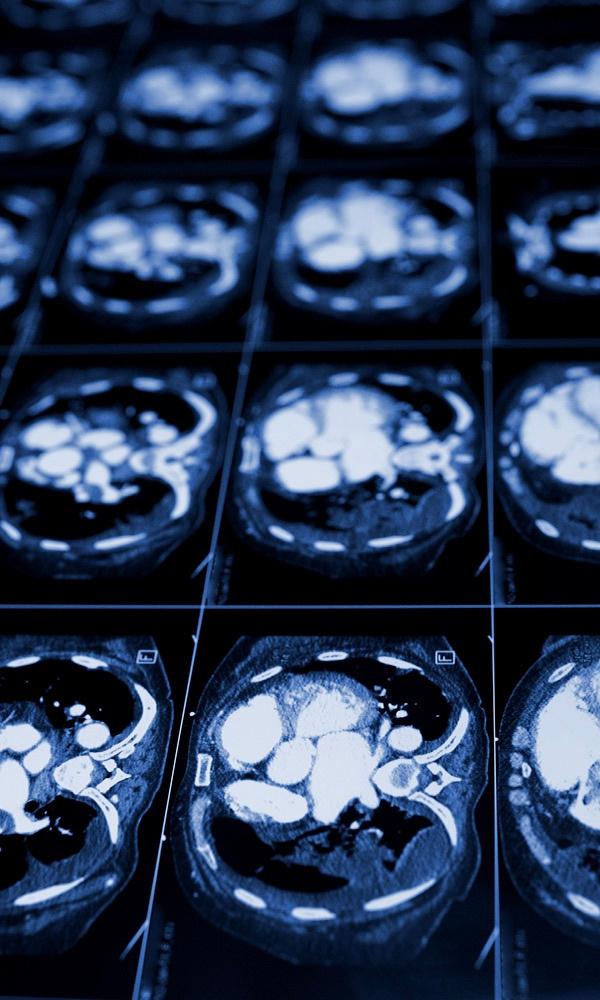

NEWS RESEARCH MEIDCINE REPORT AWARENESS ISSUE N 7 THE MEDIUNITE JOURNAL VITAL MAGASINE APRIL 2024 ISSUE N.7 A Kamran Shukoor and Ibrahim Tariq Initiative
TO KNOW THE LATEST, RELEVANT, AND VITAL MEDICAL-RELATED INSIGHTS IN THE GLOBAL WORLD MEDIUNITEJOURNAL.CA Have content to submit? contact us at mediunitejournal@gmail com

UNRAVELING THE GENETICS OF ALZHEIMER’S DISEASE
By Olivia Kim
Alzheimer’s disease (AD) is sorted into two subtypes: early-onset and late-onset (1). The majority of the population with AD have lateonset AD (LOAD) while early-onset AD (EOAD) accounts for around 1-6% of AD cases. A case is labeled as EOAD if the age of onset is between 30 to 65 years old while cases with an age of onset 65 or older is labeled as LOAD. LOAD tends to be more sporadic, meaning that the disease appears randomly with no pattern of familial inheritance, and has one associated genetic risk factor, the apolipoprotein E gene (APOE). EOAD currently has three identified causative genes: amyloid precursor protein gene (APP), presenilin-I gene (PSENI), and presenilin-2 gene (PSENII) (5). Understanding the genetic background of AD is important because both EOAD and LOAD have an apparent genetic link.
The more common form of AD, LOAD, has no causal gene. However, an allele of APOE has been identified as a genetic risk. This means that an individual with the ε4 allele of APOE is at risk of developing LOAD (1). It is important to keep in mind that the presence of APOE ε4 does not 100% guarantee that they will be affected by AD because many carriers of the allele in their 90s do not develop the disease. This implies that APOE is not the only genetic etiology of LOAD and there are several other genes involved. APOE is located on chromosome 19 and encodes the apolipoprotein E (ApoE). ApoE is a protein that regulates the metabolism and distribution of fat, specifically triglycerides and cholesterol, in the body. The APOE ε4 encodes an isoform of ApoE known as ApoE4. The
presence of ApoE4 results in higher beta amyloid plaques and neurofibrillary tangles which are both common pathologies present in AD (7).
The genetics behind EOAD differ from LOAD. Firstly, EOAD currently has three identified causal genes: APP, PSENI, and PSENII (5). Secondly, the inheritance pattern for EOAD linked genes is autosomal dominant. An autosomal dominant pattern of inheritance means that if one parent is heterozygous and the other parent is homozygous there is a 50% chance the offspring will be affected. The presence of one allele will mean that the individual will be affected AD because APP, PSENI, and PSENII are causal genes, not genetic risk factors.


MEDIUNITE MONTHLY JOURNAL MAGASINE MEDIUNITE.CA ISSUE N.7

APP is a gene located on chromosome 21. 10-15% of EOAD is accounted for by mutations in APP (2). APP encodes the amyloid precursor protein and amyloid beta (Aβ) is a product of proteolytic processing (enzymatic breakdown) of this protein (4). PSENI is a gene located on chromosome 14 and a mutation in PSENI is responsible for around 18-50% of EOAD (6). PSENI encodes a membrane protein that serves as the catalytic core of ɣ-secretase protein complex (3). ɣ-secretase normally cleaves amyloid precursor protein as part of the proteolytic process and contributes to the production of Aβ. PSENII is located on chromosome 1 and EOAD due to PSENII mutations is rare (2). Similar to PSENI, PSENII encodes for a protein that is part of the ɣ-secretase protein complex and thus also contributes to the production of Aβ (1).
The genetics behind AD is very complex. LOAD only has one linked gene identified, APOE, which is a risk factor and has not been found to be a cause (5). EOAD has three known autosomal dominant causal genes APP, PSENI, and PSENII. Mutations in these three genes lead to improperly folded proteins that are involved in the production of Aβ, a pathology of AD (1, 3, 4). It is highly unlikely that one gene by itself causes AD because genetics is complicated by gene interactions. More research is needed in order to accurately determine the genetic map of AD.
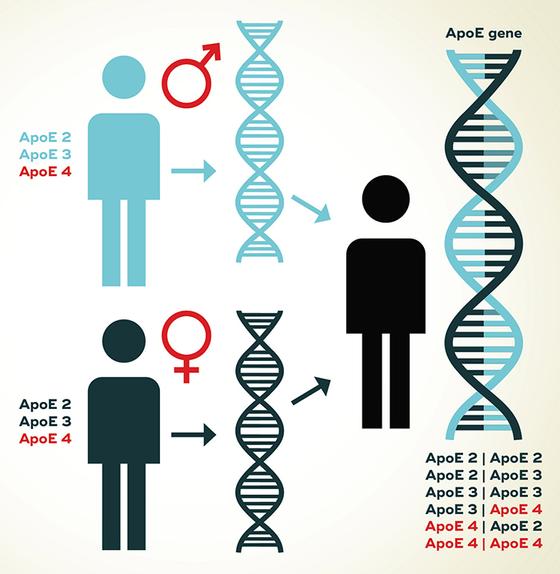

Sources
1. Bekris LM, Yu C, Bird TD, Tsuang DW. Genetics of Alzheimer’s Disease Journal of Geriatric Psychiatry and Neurology 23(4): 213-227, 2010
2 Bird TD Genetic aspects of Alzheimer’s disease Genetics in Medicine 10(4): 231-239, 2008
3 De Strooper B, Saftig P, Craessaerts K, Vanderstichele H, Guhde G, Annaert W, Von Figura K, Van Leuven F. Deficiency of presenilin1 inhibits the normal cleavage of amyloid precursor protein. Nature 391: 387-190, 1998.
4 Kang J, Lemaire H, Unterbeck A, Salbaum JM, Masters CL, Grzeschik K, Multhaup G, Beyreuther K, Muller-Hill Benno The precursor of Alzheimer’s disease amyloid A4 protein resembles a cell-surface receptor Nature 325: 733-736, 1987.
5 Tanzi RE, Blacker D Genetic Screening in Alzheimer’s Disease Generations: Journal of the American Society on Aging 24: 58-63, 2000
6 Theuns J, Del-Favero J, Dermaut B, van Duijn CM, Backhovens H, Van den Broeck M, Serneels S, Corsmit E, Van Broeckhoven C, Cruts M Genetic variability in the regulatory region of presenilin 1 associated with risk for Alzheimer’s disease and variable expression. Human Molecular Genetics 9(3): 325-331, 2000
7. Nagy ZS, Esiri MM, Jobst KA, Johnston C, Litchfield S, Sim E, Smith AD Influence of the Apolipoprotein E Genotype on Amyloid Deposition and Neurofibrillary Tangle Formation in Alzheimer’s Disease. Neuroscience 69: 757-561, 1995
MEDIUNITE MONTHLY JOURNAL MAGASINE MEDIUNITE.CA
ISSUE N.7

BREAK THE SILENCE IN THE BATTLE AGAINST DEPRESSION RELAPSE WITH MBCT
By Mira Tsui
Depression, a significant yet prevalent mood disorder affecting over 300 million people worldwide, is associated with its recurring nature, presenting relapse prevention as a critical aspect of its management (5). Treatment with pharmacological and psychological approaches is most used as they are relatively effective. Although such treatment may be practical, depression associates itself with a high risk of recurrence that increases over time after each episode. Mindfulness-based cognitive therapy was established as a viable relapse prevention program to support those at high risk of depression relapse to learn essential skills to prevent depression long term (5).
Mindfulness-based cognitive therapy (MBCT) is a group-based clinical prevention program combining cognitive behavioural therapy, meditation, and the cultivation of mindfulness, developed by Zindel Segal, Mark Williams, and John Teasdale (2). Studies have shown significant results that speak volumes of the effectiveness of mindfulness-based cognitive therapy; on average, it reduced depression relapse by nearly 50%, regardless of age, relationship status, sex, etc (1). According to data from a clinical experiment including 433 patients, the individuals who experienced moderate to severe depression symptoms, 35.6% of people faced reliable outcomes, 29.5% recovered, and only 2.7% showed deterioration (3). In addition, studies have shown that while MBCT and psychological treatments are similar, MBCT outperforms effectiveness for relapse prevention. Due to its effectiveness, many countries, such as Canada, the UK, Australia, New Zealand, and the Netherlands, have incorporated MBCT as an ethical source of relapse prevention in their clinical guidelines. Ultimately, considering all the research and data from numerous clinical experiments, MBCT appears to be a promising approach to depression management as it has been shown to reduce depression relapse rates and promote good health.
Mindfulness-based cognitive therapy has emerged with a proactive approach to relapse prevention with excellent effectiveness (2). With all the gathered information from research and data analyses, MBCT not only decreases depression symptoms and enhances mindfulness but also reduces the rate of relapse. Despite being a reliable option, it’s critical to account for its limitations, as in the study mentioned above, a few individuals experienced deterioration. To this day, the research and adaptations of MBCT are ongoing, indicating it holds the potential for further reducing the burden of relapse depression while boosting long-term mental health (4). Ultimately, MBCT possesses outstanding effectiveness in the relapse prevention of depression with its profound elements.

References:
1
Tickell, A , Ball, S , Bernard, P , Kuyken, W , Marx, R , Pack, S , Strauss, C , Sweeney, T , & Crane, C (2019) The Effectiveness of Mindfulness-Based Cognitive Therapy (MBCT) in Real-World Healthcare Services
https://www ncbi nlm nih gov/pmc/articles/PMC6995449/#:~:text T here%20is%20evidence%20from%20at,antidepressant%20medication %20
2
Schimelpfening, N (2021) How Mindfulness-Based Cognitive Therapy Works Verywell Mind
https://www verywellmind com/mindfulness-based-cognitivetherapy-1067396
3
Elices, M , Pérez-Sola, V , Pérez-Aranda, A , Colom, F , Polo, M , Martín-López, L M , & Gárriz, M (2021) The Effectiveness of Mindfulness-Based Cognitive Therapy in Primary Care and the Role of Depression Severity and Treatment Attendance Mindfulness
https://www ncbi nlm nih gov/pmc/articles/PMC8628140/
4
Musa, Z A , Kim Lam, S , Binti Mamat @ Mukhtar, F , Kwong Yan, S , Tajudeen Olalekan, O , & Kim Geok, S (2020) Effectiveness of mindfulness-based cognitive therapy on the management of depressive disorder: Systematic review. International Journal of Africa Nursing Sciences, 12, 100200
X 5
https://www sciencedirect com/science/article/pii/S221413911930099
6
Good Therapy (2013) Mindfulness–Based Cognitive Therapy
Goodtherapy.org. https://www.goodtherapy.org/learn-abouttherapy/types/mindfulness-based-cognitive-therapy
MEDIUNITE MONTHLY JOURNAL MAGASINE MEDIUNITE.CA ISSUE N.7

SOCIAL MEDIA’S INCREASINGLY SIGNIFICANT IMPACT ON HOLLISTIC HEALTH
By Saba Shaw
We live in an advanced world of technology where not having a mobile phone, especially a smartphone, could be looked down upon. Almost every human being living on this planet owns either a mobile phone or a computer. “In 2021, the number of mobile devices operating worldwide stood at almost 15 billion, up from just over 14 billion in the previous year. The number of mobile devices is expected to reach 18.22 billion by 2025, an increase of 4.2 billion devices compared to 2020 levels” (10). Additionally, “In 2024, the current number of smartphone users worldwide is 4.88 billion, meaning 60.42% of the world’s population owns a smartphone. Some users have more than one smartphone, which totals around 7.21 billion active smartphones in the world currently” (7).
With such widespread use of smartphones and access to the internet, “As of January 2024, there were 5.35 billion internet users worldwide, which amounted to 66.2 percent of the global population” (8), meaning that “5.04 billion, or 62.3 percent of the world's population, were social media users” (Petrosyan, 2024). With this data, it is no surprise that many users have social media and have access to one or two apps that they use to interact with their friends or try to stay connected with the world. Kemp.


MEDIUNITE MONTHLY JOURNAL MAGASINE MEDIUNITE.CA ISSUE N.7
2024

Social media has another title as the second most used application which greatly affects individual levels by permitting personal sharing and the finding of their online presence. This is what makes social media a pretty useful tool compared to others in that it promotes communication and better expression of views by the people. But it also has its downside effects on health. There are times when social networks can cause extreme pressure, anxiety, and depression levels that stem from constantly being bombarded with heavily edited and oftentimes unrealistic images of an individual’s life. Further, engaging intensively with social media can overdo sedentary behaviours, disrupt sleep patterns, and lower quality of real-life social engagement which is very dangerous for both mental and physical health. Therefore, social media is a significant tool in modern society and we should always understand and deal with the possible negative outcomes that may exist.
Social media impact on physical health:
Social media has changed how we communicate, share information, and form relationships. Platforms like Instagram, YouTube, Facebook, Twitter, and Snapchat are now essential parts of our daily routines, offering connectivity, entertainment, and ways to express ourselves. However, alongside these benefits, there are concerns about how social media might affect our physical health.
While much attention has been given to the psychological and emotional effects of social media, its impact on physical health has received less focus. This article aims to address this gap by exploring the relationship between social media usage and physical well-being, with a particular focus on platforms like Instagram and YouTube. Drawing from existing literature and examples from these platforms, we seek to highlight the various ways in which social media can impact physical health, including issues such as wrist pain, neck and upper back pain, eyestrain, headaches, and vision difficulties.
Sedentary Behaviour:
Social media usage has been associated with increased sedentary behaviour, which can have detrimental effects on physical health. “Given the increasing availability of information and communication technology and labour-saving devices, people currently spend a lot of time on sedentary behaviours around the world” (5). For example, spending hours scrolling through Instagram or watching YouTube videos can lead to a more sedentary lifestyle, reducing opportunities for physical activity and exercise. Research conducted where “the group concluded that there is strong evidence that exposure to high volumes of sitting time can significantly increase one's risk for all-cause and cardiovascular mortality, as well as for incident cardiovascular disease and type 2 diabetes” (11).
Cyberbullying:
Social media platforms can also contribute to physical health issues through cyberbullying and

MEDIUNITE MONTHLY JOURNAL MAGASINE MEDIUNITE.CA ISSUE N.7

online harassment. For instance, negative comments, trolling, and bullying on Instagram can lead to stress, anxiety, and depression, which in turn can manifest as physical symptoms such as headaches, upset stomach, and muscle tension. Similarly, hateful comments and harassment on YouTube videos can have a detrimental impact on the physical and mental well-being of users, “leading to both short-term and long-term health consequences such as eyes water, lump in throat, dizziness, alcohol use, and sexual risk” (4).
FOMO Frenzy: Stressing Out the Body:
The fear of missing out (FOMO) induced by social media can trigger stress and anxiety responses in our bodies. The incessant need to stay updated and connected can elevate cortisol levels, leading to increased heart rate, elevated blood pressure, and compromised immune function. This chronic state of stress can take a toll on our physical health, making us more susceptible to illnesses and reducing our overall well-being.
In conclusion, while social media has revolutionised the way we communicate and interact with the world, its impact on physical health cannot be overlooked. From promoting sedentary behaviours to disrupting our sleep patterns and triggering stress responses, social media has a complex relationship with our bodies. It is essential to be mindful of our digital consumption and prioritise our physical well-being in this digital age.
Whether we like it or not, the digital dilemma is here to stay, and its effects on our bodies are profound. By understanding the intricate ways in which social media influences our physical health, we can make informed choices and strive for a balanced lifestyle in the digital era.
References:
1
Clinic, C (2024, March 19) How social media can harm your body image Cleveland Clinic https://health clevelandclinic org/socialmedia-and-body-image
2.
Cowie, H. (2013). Cyberbullying and its impact on young people’s emotional health and well-being The Psychiatrist, 37(5), 167–170 https://doi org/10 1192/pb bp 112 040840
3
Dibb, B (2019) Social media use and perceptions of physical health Social Media Use and Perceptions of Physical Health, E00989(1), 5 https://www.cell.com/heliyon/fulltext/S2405-8440(18)33748-4?
returnURL=https%3A%2F%2Flinkinghub elsevier com%2Fretrieve%2 Fpii%2FS2405844018337484%3Fshowall%3Dtrue#%20
Goshe, Brett M , "Cyberbullying Among Young Adults: Effects on Mental and Physical Health" (2016) Master's Theses 964 https://opencommons uconn edu/gs theses/964
4 Huang, Z , Liu, Y , & Zhou, Y (2022) Sedentary Behaviors and Health Outcomes among Young Adults: A Systematic Review of Longitudinal Studies Healthcare, 10(8), 1480
6
https://doi.org/10.3390/healthcare10081480
5 Impact of fitness influencers on the level of physical activity performed by Instagram users in the United States of America: Analytical Cross-Sectional Study (2022, November 19) Impact of Fitness Influencers on the Level of Physical Activity Performed by Instagram Users in the United States of America: Analytical CrossSectional Study; National Library of Medicine
https://doi org/10 3390/ijerph192114258
7
Jay, A (2024, March 1) How many smartphone users are there in the world? There are over 5 22 billion smartphone users in the world, r Financesonline com https://financesonline com/number-ofsmartphone-users-worldwide/
8
7
Jay, A (2024, March 1) How many smartphone users are there in the world? There are over 5 22 billion smartphone users in the world, r Financesonline com
https://financesonline com/number-of-smartphone-users-worldwide/
Kemp, S (2024, February 20) 5 billion social media users DataReportal – Global Digital Insights. DataReportal – Global Digital Insights. https://datareportal.com/reports/digital2024-deep-dive-5-billion-social-media-users
9
Lee, D , Jiang, T , Crocker, J , & Way, B M (2022) Social media use and its link to physical health indicators Cyberpsychology, Behavior, and Social Networking, 25(2), 87–93
https://doi org/10 1089/cyber 2021 0188
10.
Number of mobile devices worldwide 2020-2025 | Statista. (2023, March 10). Statista. https://www statista com/statistics/245501/multiple-mobile-device-ownershipworldwide/
11
Owen, N , Healy, G N , Dempsey, P C , Salmon, J , Timperio, A , Clark, B , Goode, A D , Koorts, H , Ridgers, N D , Hadgraft, N , Lambert, G W , Eakin, E G , Kingwell, B A , & Dunstan, D W (2020) Sedentary Behavior and public Health: Integrating the evidence and identifying potential solutions Annual Review of Public Health, 41(1), 265–287
https://doi org/10 1146/annurev-publhealth-040119-094201
12
13
Social media use can be positive for mental health and well-being (2020, May 28) News
https://www.hsph.harvard.edu/news/features/social-media-positive-mental-health/
Tandon, A , Kaur, P , Dhir, A , & Mäntymäki, M (2020) Computers in human behavior Sleepless Due to Social Media? Investigating Problematic Sleep Due to Social Media and Social Media Sleep Hygiene https://doi org/10 1016/j chb 2020 106487
14
Tiggemann, M , & Anderberg, I (2019) Social media is not real: The effect of ‘Instagram vs reality’ images on women’s social comparison and body image. New Media & Society, 22(12), 2183–2199 https://doi org/10 1177/1461444819888720
15
Tricás-Vidal HJ, Vidal-Peracho MC, Lucha-López MO, Hidalgo-García

MEDIUNITE MONTHLY JOURNAL MAGASINE MEDIUNITE.CA ISSUE N.7
C 1 C2. D 3 G 4 H 5 I 6
in
Int J Environ Res Public Health 2022
C, Monti-Ballano S, Márquez-Gonzalvo S, Tricás-Moreno JM Impact of Fitness Influencers on the Level of Physical Activity Performed by Instagram Users
the United States of America: Analytical Cross-Sectional Study
Nov 1;19(21):14258 doi: 10 3390/ijerph192114258 PMID: 36361138; PMCID: PMC9657672

VIRAL INFECTIONS' IMPACT ON CARDIOVASCULAR HEALTH AND EARLY RISK OF HEART DISEASE
By Farhnaz Fazli
Background
Cardiovascular disease (CD) remains one of the largest disease burdens at the global Level (1). One of the many causes of CD is a condition known as Myocarditis: inflammation of the heart muscle. It often manifests in patients as: chest pain, irregular heartbeat (arrhythmia), and sudden death (2). Myocarditis can be caused by various factors, but one of the common factors causing sudden cardiac death are: viral infections. It is traditionally believed that viral infections that induce Myocarditis trigger the body’s immune response which lead to inflammation of the heart muscle. This in turn affects heartbeat patterns. However, scientists with the Fralin Biomedical Research Institute at Virginia Tech Carilion (VTC) have recently revealed a new understanding of how viral infections affect the heart (3).
Heart Damage Before Inflammation
The team of scientists found that viruses can damage the heart before the inflammatory response is initiated. This means before the tissue is ever visibly inflamed, the heart is already in the process of developing arrhythmia (irregular heartbeat) (2).
Using mouse models and Mouse Adenovirus Type-3 to mimic the human infection process, the scientists noticed that the virus affected the heart’s communication and electrical systems before any symptoms appeared physically in the mice. The systems affected include: Gap junctions (the communication channels found between heart cells) and ion channels that help maintain the
balance of ions (and electrical activity) needed for the heart to beat properly. Disrupting these systems results in the heart developing irregular patterns of electrical activity (arrhythmias), which in turn affect

to reconsider methods and procedures to diagnose and treat viral infections that affect the heart. New diagnostics should be able to address what is occurring before the inflammation kicks in. The scientists from the study suggest next steps should include blood tests that help reveal biomarkers of those individuals at greater risk for Arrhythmia.
References

Global, regional, and national burden of myocarditis from 1990 to 2017: A systematic analysis based on the global burden of disease study 2017. (n.d.). PubMed Central (PMC).
https://www ncbi nlm nih gov/pmc/articles/PMC8284556/#B1
2.
1. Myocarditis - Symptoms and causes. (2022, May 20). Mayo Clinic.
https://www mayoclinic org/diseasesconditions/myocarditis/symptoms-causes/syc-20352539
Revealing a hidden threat: Researchers show viral infections pose early heart risks (2024, March 27) ScienceDaily
https://www sciencedaily com/releases/2024/03/240306203111 htm
MEDIUNITE MONTHLY JOURNAL MAGASINE MEDIUNITE.CA ISSUE N.7
3

THE DUALITY OF SICKLE CELL DISEASE: DEVASTATING ILLNESS OR EVOLUTIONARY ADVANTAGE?
By Terence Liu
Sickle cell disease is a hereditary genetic disorder that impacts countless individuals globally, disproportionately affecting those of African, Middle Eastern, and Asian descent. In affected patients, red blood cells, or erythrocytes, are acutely altered in their morphology, consequently inciting numerous health complications. In this article, we will explore the mechanisms behind sickle cell disease: the reasons behind its cause, their devastating symptoms, and even how it may be an advantage to have in certain environments. Join us as we delve into this crucial topic, poised to deepen your understanding and appreciation of the complexities surrounding sickle cell disease.
The trademark manifestation of sickle cell disease is the change in erythrocyte anatomy, transforming them from their typical biconcave discoid shape into a warped sickle or crescent. However, beyond the structural alterations, the implications are far more sinister and hazardous to the survival of the individual. To grasp the gravity of these ramifications, we must first understand how red blood cells function.
Red blood cells, comprising 55% of blood, play a crucial role in sustaining life. Their primary function? To supply oxygen to every cell in the body. This task is no mere feat it's the linchpin of cellular respiration, the very process upon which our survival hinges. Without oxygen, glucose metabolism would not be able to occur, subsequently leading to cell death, which is why strokes are so lethal as they deprive brain cells of oxygen and nutrients. At the centre of this operation lies haemoglobin, a protein which enables erythrocytes to effectively bind to oxygen and maintain its dissolution until it reaches the target tissues. Normal haemoglobin is known as haemoglobin A, and altering it in any way dwindles the efficiency of oxygen transportation, jeopardising the safety of the individual.
Sickle cell disease devastates those it afflicts, exhibiting disastrous ramifications; it seems completely unfathomable to consider any potential benefit from inheriting this condition. However, a closer examination of the relationship between sickle cell disease and malaria, particularly in the concentrated centres of Africa and Malaysia, reveals a surprising revelation.
Sickle cell anaemia only occurs if both parents pass on a mutated HBB gene to their child. What if the offspring only inherits one copy of the gene? Instead of the debilitating effects of sickle cell anaemia, the sickle cell trait is displayed. Those with this condition exhibit little to no signs of the symptoms of sickle cell anaemia, and despite having some of the crescent-shaped red blood cells, lead normal and healthy lives. So how could this possibly be beneficial? First, we have to explore the mechanisms of malaria.

MEDIUNITE MONTHLY JOURNAL MAGASINE MEDIUNITE.CA ISSUE N.7

Malaria is a disease caused by a parasite under the genus Plasmodium, typically distributed through mosquitoes in tropical climates. Those afflicted by this disease will experience high fevers, chills, and abdominal pain, consequently leading to 400,000 people dying annually. These protozoa infect our body as mosquitoes bite into our skin. Once they penetrate the skin, tiny sporozoites flood into our bloodstream where they navigate to our hepatocytes, or liver cells. Here, they take up residence for around a week, rapidly proliferating and morphing into merozoites. After their maturation, these merozoites rush back into the bloodstream to target our oxygen bearers: the erythrocytes. Similarly in the liver, the merozoites invade our red blood cells to perpetuate their parasitic life cycle. As they continue reproducing, they incessantly rob us of necessary nutrients; without a robust immune system or intervention from external treatments, the body finds itself overwhelmed by the parasites’ assault.
How does sickle cell trait play a role in fortifying the body against this deadly disease? As it turns out, just as the crescent red blood cells cannot survive for long, the merozoites find it difficult to obtain sustenance from them as well. Through their distorted shape, the stretched membranes of the erythrocytes render it porous, inevitably draining out the essential nutrients for the parasite. As a result, individuals with the sickle cell trait find themselves gifted with a degree of resistance against malaria. In regions where malaria is prevalent, this genetic mutation emerges as a selective advantage over the normal genotype. In this surprising interplay between the sickle cell trait and malaria, two facts points are made clear: an evolutionary advantage is only as good as the environment allows it to be, and not all genetic conditions are malevolent. Having contracted malaria, a normal person would have a much lower chance of survival compared to a sicklecelled individual. As such, there is a much higher concentration of sickle cell citizens in Africa and Malaysia, emphasising the impact that environment has on genetics. As we continue to navigate the ever-evolving landscape of healthcare, let us not overlook the invaluable lessons gleaned from this symbiotic relationship; by embracing a holistic understanding of genetics, environment, and disease, we pave the way for innovative approaches to combating malaria and other formidable obstacles.
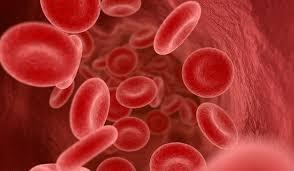
References
1
(1) American Society of Hematology (2021) Sickle cell disease Hematology org
https://www hematology org/education/patients/anemia/sickle-cell-disease
2
(2) American Society of Hematology (2023) Sickle cell trait Hematology org; American Society of Hematology
https://www hematology org/education/patients/anemia/sickle-cell-trait
(3) Hasudungan, A (2013) Malaria - plasmodium [YouTube Video] In YouTube https://www youtube com/watch? v=dyprqPM1rHI 3
4
(4) Malaria Vaccine Initiative (2018, February 20) Life cycle of the malaria parasite PATH’s Malaria Vaccine Initiative https://www malariavaccine org/malaria-and-vaccines/vaccine-development/life-cycle-malariaparasite
5
6
(5) Mayo Clinic (2023a, February 9) Malaria - symptoms and causes Mayo Clinic https://www mayoclinic org/diseases-conditions/malaria/symptoms-causes/syc-20351184
(6) Mayo Clinic (2023b, December 22) Sickle cell anemia - symptoms and causes Mayo Clinic; Mayo Clinic Staff https://www mayoclinic org/diseases-conditions/sickle-cell-anemia/symptoms-causes/syc-20355876
7
8
(7) MedlinePlus (n d ) Sickle cell disease: MedlinePlus genetics Medlineplus gov Retrieved April 7, 2024, from https://medlineplus gov/genetics/condition/sickle-celldisease/#: :text Variants%20(also%20call%20ed%20mutations)%20in
(8) Nemours TeensHealth (n d ) What’s the connection between sickle cell trait and malaria? (For teens) Kidshealth org Retrieved April 7, 2024, from https://kidshealth org/en/teens/sickle-cell-traitmalaria html#:~:text If%20a%20mosquito%20carr%20ying%20the
(9) Rozenbaum, M (2019, June 19) How sickle cell protects against malaria Understanding Animal Research https://www understandinganimalresearch org uk/news/how-sickle-cell-protects-against-malaria-a-stickyconnection

MEDIUNITE MONTHLY JOURNAL MAGASINE MEDIUNITE.CA ISSUE N.7
10
9

ADVANCEMENTS IN DIABETES TECHNOLOGY: TRANSFORMING MANAGEMENT FOR TYPE 1 DIABETICS
By Yatharashna Prabhu
From devices like blood glucose metres and continuous glucose monitoring (CGM) to state-of-theart insulin pumps and beyond, diabetes technology has become more user-friendly and minimally invasive. This makes it easier for anyone to find out what works best for them by being able to consider a multitude of options.
The diabetes control and complication study has shown that, in line with the degree of blood sugar control, there is a decreased occurrence of diabetic complications following close regulation of blood sugar levels through the continuous use of insulin (5). To help patients achieve these objectives, technology for diabetes management has been further developed.
According to the Diabetes Control and Complications Trial (DCCT), the standard treatment for type 1 diabetes is intensive insulin therapy (5). However, this method increases the risk of severe hypoglycemia, which can lead to life-threatening complications. To avoid complications, the American Diabetes Association recommends keeping HbA1c below 7% (1). Monitoring blood sugar, calculating carbohydrate intake, and adjusting the insulin dose depending on various factors such as exercise or stress is the responsibility of the patients.
Data show that only a small proportion of patients achieve the HbA1c target. To address this problem, new diabetes technologies are being developed to improve disease management and glycemic control, including new insulin analogs, CGM systems, insulin pump therapy, and automated insulin delivery systems (3). These advances make diabetes management easier and better for patients.
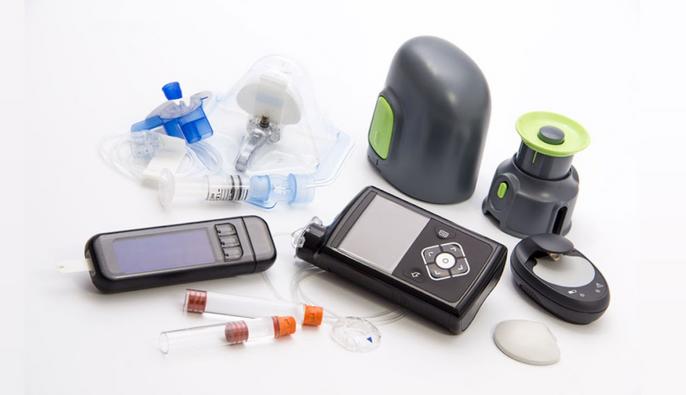

MEDIUNITE MONTHLY JOURNAL MAGASINE MEDIUNITE.CA ISSUE N.7
Recent Advances in Advanced Insulin/Glucagon Monitoring and Delivery: (See Next Page)

Continuous Glucose Monitors (CGM) Provide Real-Time Glucose Data Without Fingers (3)
Dexcom G7: A smaller, more accurate sensor worn on your upper arm.
FreeStyle (FreeStyle Libre and FreeStyle Libre 14 days): worn on your upper arm.
Insulin Pumps Provide Automatic Insulin Based On CGM Readings (3)
t: slim X2 Insulin Pump with Control-IQ technology: predicts and prevents highs and lows. integrates with Dexcom G6 and G7 CGMs.
Omnipod 5: tubeless insulin monitoring system: measures predicted glucose levels.
Other insulin delivery devices (3):
Beta Bionics iLet: eliminates the need for carb counting and bolus by fully automating insulin dosing.
Companion Medical's InPen: smart pen to calculate dose and track injection data.
Glucagon delivery devices (3):
Gvoke HypoPen: EpiPen-style glucagon rescue pen for severe hypoglycemia.
BAQSIMI Nasal glucagon: Nasal glucagon spray for low blood sugar. Overall, these advances in diabetes technology offer greater convenience, accuracy, and control to those caring for people with diabetes.
References


2
American Diabetes Association. (n.d.). Devices & Technology | ADA American Diabetes Association.
3
https://diabetes org/about-diabetes/devicestechnology
1. Sherwood, J S , Russell, S J , & Putman, M S (2020, October 14). New and Emerging Technologies in Type 1 Diabetes Endocrinology and Metabolism Clinics of North America, 49(4), 667–678
https://doi org/10 1016/j ecl 2020 07 006
Diabetes Technology Update: The Latest Continuous Glucose Monitors and Insulin & Glucagon Delivery Devices (2023, August 11)
UMass Chan Medical School
https://www.umassmed.edu/es/dcoe/news/d iabetes-technology-update/
4.
Choosing the best technology to manage your child’s diabetes (2019) Nationwide Children’s.
https://www nationwidechildrens org/family -resourceseducation/700childrens/2019/10/c%20hoosin g-the-best-technology-to-manage-yourchilds-diabetes
Diabetes Control and Complications Trial (DCCT): Results of Feasibility Study The DCCT Research Group (1987) Diabetes Care, 10(1), 1–19
https://doi org/10 2337/diacare 10 1 1
MEDIUNITE MONTHLY JOURNAL MAGASINE MEDIUNITE.CA ISSUE N.7
5

THE SILENT THREAT: ENDOCRINE DISRUPTING CHEMICALS
By Maya Madhvani
Although invisible, man-made chemicals are a part of our daily lives. Some can even significantly affect our health and environment. Close to 800 such chemicals are known or suspected to interfere with our hormones, but only a small fraction have been researched (1). Understanding the impact of endocrine-disrupting chemicals (EDCs) is crucial as we continue our lives.
But first, what are EDCs? EDCs are chemicals that affect the body's hormones, part of the endocrine system (2). They can be natural or artificial. EDCs can be found in toys, clothing, pesticides, electronics, building materials, shampoos, conditioners, and more. We contact these chemicals through the food we eat, the water we drink, products we put on our skin or touch, and even the air we breathe. Certain professions and environmental factors may also increase the risk of EDC exposure.

BPA is one type of EDC found in plastics. It has been found to affect hormonal development in both females and males, including infertility and reproductive-related cancers (3). This situation has become even more extreme as microplastics have been found in human blood for the first time (4). In-depth research on the effects of microplastics is yet to be done, as the effect they might have on organs is still unknown.
Although the research is still underdeveloped, the effects of EDC exposure affect individuals at all stages of life. Research has shown that the impact of EDC exposure is the largest during embryonic development through infancy, as these are the most crucial development stages for humans. Prenatal exposure to EDCs has been linked to developmental abnormalities, reproductive disorders, and neurological impairments in children.

MEDIUNITE MONTHLY JOURNAL MAGASINE MEDIUNITE.CA ISSUE N.7

For adults, the effects of EDC exposure on their hormones go away when the disrupting chemical is removed. However, it is still critical as EDCs have been associated with hormone-related cancers, metabolic disorders, infertility, and immune dysfunction.
Addressing the risks associated with EDCs is a significant challenge for regulators and policymakers worldwide. Identifying and assessing the thousands of chemicals with potential endocrine-disrupting properties is daunting.
Some recommendations to prevent EDC exposure have been to (5).
1. Avoid plastics as much as you can
2. Pregnant women, as well as children, should avoid contact and inhalation of chemicals
3. Eating hot food or drinking a hot drink in a plastic container should be avoided (4). Eat less processed food
More importantly, creating awareness and educating people about EDCs is crucial to empower individuals to make informed choices and reduce their exposure to these harmful chemicals. Through research, regulation, and public awareness, we can mitigate the risks associated with EDCs and protect the health and well-being of current and future generations.
References
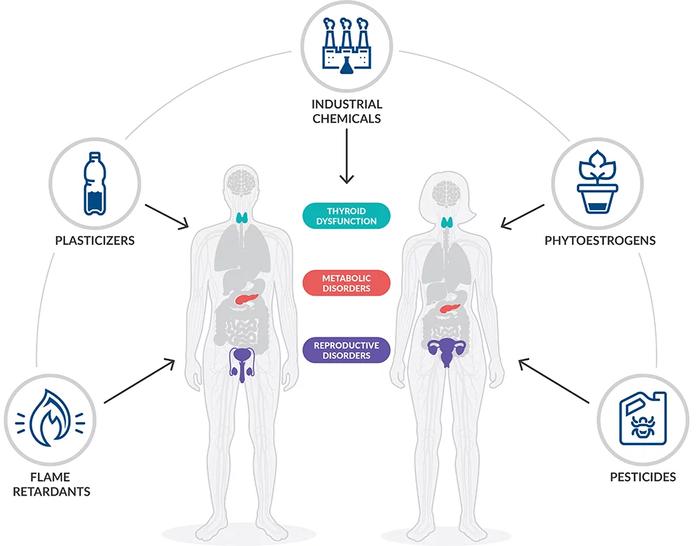

2.
4
5
Overview reports on endocrine disrupting chemicals and potential EDCs (2023, August 10). UNEP - UN Environment Programme. https://www unep org/resources/report/over view-reports-endocrine-disruptingchemicals-and-potential-edcs
1. Endocrine disruptors. (n.d.). National Institute of Environmental Health Sciences https://www.niehs.nih.gov/health/topics/age nts/endocrine
The impact of bisphenol a on fertility, reproductive system, and development: A review of the literature (2018) PubMed
Central (PMC)
https://www ncbi nlm nih gov/pmc/articles/P MC6481157/#: :text=There%20is%20increasi ng%20evidence%20%20that,and%20follicle%2 0loss%20in%20female
Lang, K (n d ) Could microplastics in human blood pose a health risk? Medical and health information
https://www.medicalnewstoday.com/articles /could-microplastics-in-human-bloodpose-a-health-risk#Possible-health-effects
What you can do about EDCs (2019, October 29) Endocrine org | Endocrine Society
https://www endocrine org/topics/edc/whatyou-cando#: :text=Minimize%20consumption%20of %20proc%20essed%20foods,heating%20food %20in%20plastic%20containers
MEDIUNITE MONTHLY JOURNAL MAGASINE MEDIUNITE.CA ISSUE N.7
3

HEALTHY HEART, HEALTHY LIVING
By Ana Syed
Ischemic heart disease or disease of the vessels that supply your heart with blood and oxygen is among leading cause of death (4). It is the most common type of cardiovascular disease. Some people think that it is just a disease “older people” get; others picture a man clutching his chest, as often seen in movies, when they imagine what a heart attack might look like This is in fact, not always true. Your heart is made up of muscle, and its job is to pump blood around the entire body. Think about if you are running a marathon; after some time, you get tired and you want to stop and rest. Once you rest, you can go on. The heart, on the other hand, cannot do this. It is pumping blood 24 hours a day to keep you alive.
The heart is sometimes unable to do this because the arteries providing the heart with blood flow and oxygen get blocked. When blood cannot reach the different parts of the heart, a section of the heart gets tired and will not be able to function properly or be able to provide adequate blood to the various organs in the body. This is then felt like a pain in your chest. Some people, however, do not feel the same type of pain, such as people with diabetes, or those who have had a heart transplant. Even certain women and men tend to have different types of pain. Heart disease can impact people of various ages, genders, and ethnicities, although some may be at higher risk than others, such as those with Diabetes. In terms of its presentation, it varies widely across different groups. It often impacts men and women differently in terms of its presentation, treatment, and recovery In fact, many research studies are ongoing, investigating exactly how different a heart attack presents in women versus men.
References
Alcoholandhearthealth:Separatingfactfromfiction (2022 February16) JohnsHopkinsMedicine basedinBaltimore Maryland
https//wwwhopkinsmedicineorg/health/wellness-and-prevention/alcohol-and-heart-health-separating-fact-from-fiction 1
Heartdiseaserisk:Howraceandethnicityplayarole (nd) ClevelandClinic https://myclevelandclinicorg/health/articles/23051-ethnicityand-heart-disease 2
Howtoimprovecardiovascularendurance (nd) ClevelandClinic https://myclevelandclinicorg/health/articles/24754-cardiovascularendurance 3
4
Whatiscoronaryheartdisease?(nd) NHLBI NIH https://wwwnhlbinihgov/health/coronary-heartdisease#: :text Heart%20disease%20is%20the%20leadingdisease%20or%20ischemic%20heart%20disease
Some risk factors you are born with and cannot change (e.g., age, gender, family history, certain ethnicities), and other factors are things we can change by altering some habits and/or seeking help (e.g., high blood pressure, elevated cholesterol, tobacco/excessive alcohol use, obesity, sedentary lifestyle, depression, and stress) (2). The good news is you can reduce your risk of acquiring ischemic heart disease by taking care of yourself. It is an essential part of this process, like eating well and maintaining a healthy weight, getting regular daily exercise (≥150 minutes per week), getting adequate sleep, avoiding smoking and excessive alcohol use, and practising self-care and maintaining a positive mental health (1).

In conclusion, take the stairs instead of the elevator, avoid those sugary treats, do not immediately sit down after you eat, go for regular walks (at least 30-minutes) around your home or within your apartment/condo building, and do these types of preventative strategies with your family and friends (3). This will improve your mood and keep you motivated. We are better together than we are alone. Help your friends and family live longer lives with you, and with healthier hearts.

MEDIUNITE MONTHLY JOURNAL MAGASINE MEDIUNITE.CA ISSUE N.7

FOOD FOR THOUGHT: ADDITIVES AND THEIR RELATION TO CARDIOVASCULAR DISEASE
By Sumit Sengupta
Food additives are an invisible but integral part of our everyday lives, as they are added to various kinds of foods that we consume Additives are substances that are primarily added to foods for purposes such as improving safety, extending the time for which they can be stored, or enhancing their colour, flavour, or texture (6). Food additives can be derived from plants, animals, or minerals, or they can be chemically synthesised.
So, the question is: do food additives have any relation to cardiovascular disease (CVD)?
According to a 2023 study, the answer is yes; a high intake of emulsifiers, a common type of food additive, could increase the risk of CVD, though some experts are not extremely confident yet (6) The French NutriNet-Santé study suggested that a high intake of emulsifiers, a common type of food additive, could increase the risk of CVD. Emulsifiers are used to help mix two substances that typically separate when they are combined (2). Examples include acetic acid esters, cellulose, guar gum, lecithin, mono- and diglycerides, polysorbate, and others. One can find emulsifiers in various pre-packaged and processed foods, such as mayonnaise, meats, ice cream, chocolate, peanut butter, cookies, breads, etc. (5).
The study found positive associations between the risk of CVD and the consumption of five individual and two groups of food additive emulsifiers widely used in industrial foods.
Researchers had analysed in detail the intake of ultra-processed foods (UPFs) among 95,442 healthy French adults (1). The emulsifiers identified by the study that can potentially increase the risk of cardiovascular disease are known to exert inflammatory effects at the intestinal level.
Some experts, however, feel a more detailed examination is needed to confirm a link between CVD and additives. “The evidence is not yet strong enough to advise everybody to avoid eating emulsifiers. To identify cause and effect, we need to do clinical trials,” says Prof. Kevin Whelan, Professor of Dietetics and head of the Department of Nutritional Sciences at King’s College London (4). Tracy Parker, BHF Heart Health dietician, believes there is a need for more research to properly understand the link between UPFs and heart disease
While studies continue, it can be safely said that cutting down on ultra-processed foods can, in general, help improve diets and, in doing so, lower any potential health risk. (4)
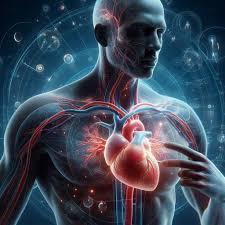

References
2
1 Angioma Alliance (n d ) Alliance to Cure Cavernous Malformation, Cavernoma, Cavernous Angioma https://www alliancetocure org/wpcontent/uploads/2020/08/EmulsifierList pdf
3
4
(n d ) Accueil | Observatoire de la prévention de l'Institut de Cardiologie de Montréal
https://observatoireprevention org/en/2023/10/26/emulsifiers-foodadditives-that-increase-the-%20Risk-of-cardiovascular%20disease/#: :text=The%20study%20found%20positive%20associations ,of%20citric%20and%20l%20actic%20acids
Food additives (2018, January 31) https://www who int/news-room/factsheets/detail/food-additives
Food additives (n d ) Better Health Channel - Better Health Channel https://www betterhealth vic gov au/health/conditionsandtreatments/fo od-additives
5
Insight, F (2021, May 7) What are emulsifiers, and what do they do in our food? – Food insight Food Insight https://foodinsight org/emulsifiersin-food/
6
Sellem, L et al (2023, September) Food additive emulsifiers and risk of cardiovascular disease in the NutriNet-Santé cohort: prospective cohort study PubMed https://pubmed ncbi nlm nih gov/37673430/
MEDIUNITE MONTHLY JOURNAL MAGASINE MEDIUNITE.CA ISSUE N.7

THE ALTERNATIVE HEALING: THE QUANTUM WAY
By Sherifatu Adamu Musa (Rifa Coolheart)
In recent years alternative healing modalities have gained significant popularity. These modalities often attract individuals seeking holistic approaches to improve their well-being. One such approach is quantum healing, a term coined by alternative medicine advocate Deepak Chopra to describe the potential influence of our thoughts, beliefs, and attitudes on our health and overall experience of illness (1). This theory is directed at healing the mind-body from a deep unseen level of consciousness, similarly to how quantum physics aims to describe physical phenomena normally hidden at a subatomic level (1).
There are several key principles of quantum healing which aid in deepening one's understanding of this approach to alternative healing.
Firstly, quantum healing aims to acknowledge the intricate relationship between the mind and the body. Therefore, our thoughts, beliefs, and attitudes can potentially have a profound impact on our overall health and help individuals cope with physical symptoms. By cultivating positive and empowering thoughts, quantum healing aims to promote overall well-being. According to the Journal of Social Cognitive and affective neuroscience, individuals who practise positive affirmations often experience decreased stress, increased well-being, and make people more open to behaviour change (2).
quantum healing include; meditation, acupuncture, hypnotherapy, and magnetic stimulation. According to the National Center for Complementary and Integrative Health, over 30% of adults in the United States use non-conventional health care methods together with or in place of conventional methods (3).

Furthermore, this theory is underpinned by the notion that energy flows through our bodies and influences our health. Some methods of
Regardless of measured impact, there is a positive cognitive effect that is sustained in the minds of patients as a result of employing these methods of alternative healing. This suggests that quantum healing methods can help individuals cultivate a positive outlook towards health challenges and reduce stress. The intention of the healer administering the treatment plan also has an impact on the healing process. By shifting one’s thoughts and beliefs, a level of trust is established between patient and professional.

MEDIUNITE MONTHLY JOURNAL MAGASINE MEDIUNITE.CA
ISSUE N.7

Individuals who practise positive visualisation may experience a significant reduction in stress and anxiety levels compared to those who do not. This is put into practice by paying attention to one’s thoughts and consciously choosing to cultivate positive and empowering thought patterns. The impacts of engaging in mindfulness and meditation practices to develop awareness of your thoughts, emotions, and physical sensations were observed in a meta-analysis published in JAMA Internal Medicine, which found that mindfulness meditation programs led to improvements in symptoms of anxiety, depression, and pain (4). According to a survey conducted by the American Hospital Association, over 42% of hospitals in the United States offer one or more complementary or alternative medicine services (5).
It is important to note that while quantum healing has gained popularity through anecdotal evidence of its effectiveness, scientific research in this field is still evolving. It is always advisable to consult with qualified healthcare professionals and use alternative healing modalities as complementary approaches to conventional medical care. Incorporating the principles of quantum healing into your life can empower you to take an active role in your well-being and explore the connection between your thoughts, beliefs, and health.

References:
1
Quantum healing (n d )
Encyclopedia com | Free Online
Encyclopedia
https://www encyclopedia com/religion /legal-and-politicalmagazines/quantum-healing
2
Cascio, C ,N , O'Donnell, M B , Tinney, F J , et al (2016) Self-affirmation activates brain systems associated with self-related processing and reward and is reinforced by future orientation. Social cognitive and affective neuroscience, 11(4), 621–629.
https://doi org/10 1093/scan/nsv136
3.
Complementary, alternative, or integrative health: What’s in a name? (n.d.).
NCCIH https://www nccih nih gov/healt h/complementary-alternative-orintegrative-health-whats-in-a-name
4
Goyal M, Singh S, Sibinga EMS, et al (2014) Meditation Programs for Psychological Stress and Well-being: A Systematic Review and Meta-analysis.
JAMA Intern Med 174(3):357–368
doi:10.1001/jamainternmed.2013.13018
5
American hospital association (2011) More Hospitals Offering Complementary and Alternative Medicine Services.
https://www aha org/system/files/press center/pressrel/2011/110907-pr-
camsurvey pdf

MEDIUNITE MONTHLY JOURNAL MAGASINE MEDIUNITE.CA
ISSUE N.7

THE HEALTHCARE REVOLUTION: ADVANCES IN RED BIOTECHNOLOGY FOR HEALTHCARE.
By Rachvik Arora
Red Biotechnology drives significant changes in healthcare through genetic engineering and molecular biology. This article explores its applications, from disease diagnosis to therapy, showcasing innovations like personalized medicine, genetic engineering, nanotechnology, edible vaccines, and biologics. Genetic engineering involves adding or modifying genes across species, with techniques like CRISPR/Cas9 revolutionizing healthcare. CRISPR Technology offers groundbreaking potential in addressing genetic disorders, reshaping humanity in ways once unimaginable.
In a groundbreaking 2019 clinical trial, CRISPR technology demonstrated its potential in treating genetic disorders, such as beta-thalassemia. Through innovative intervention, patient's hematopoietic stem cells were extracted and edited ex vivo using CRISPR-Cas9 to correct a mutation in the HBB gene. Reintroduced into the patient's body, these edited cells led to significant improvements, reducing the need for blood transfusions and enhancing the patient's condition.
CRISPR Technology holds promise in cancer and infectious disease research by enabling precise genetic modifications. In cancer, it identifies drug-resistant mutations, supports genetic screening, and shows potential in early cancer diagnosis and therapy. In infectious diseases like HIV, CRISPR/Cas9 offers hope for permanent cures and novel treatments. However, challenges like off-target effects and regulatory issues must be addressed
Personalized medicine, a cornerstone of red biotechnology, tailors treatments to patients' genetic profiles. By integrating genomic data, bioinformatics, and pharmacogenomics, it enhances treatment efficacy and minimizes side effects. This approach has the potential to revolutionize disease management and drug therapy.
Next-generation sequencing (NGS) platforms like Illumina's HiSeq and NovaSeq have transformed genomic analysis by enabling rapid and costeffective sequencing of entire genomes. They capture genetic variations, mutations, and biomarkers with unprecedented accuracy and depth, providing comprehensive insights into an individual's genetic makeup. NGS facilitates the identification of disease-associated genes and personalized treatment strategies.
The Human Genome Project (HGP), completed in 2003, was a groundbreaking effort in genomic research, sequencing the entire human genome. This monumental endeavor laid the foundation for subsequent large-scale genome sequencing initiatives, fueling advancements in personalized medicine.
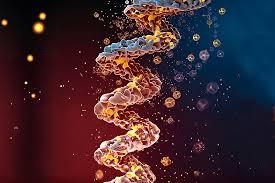

MEDIUNITE MONTHLY JOURNAL MAGASINE MEDIUNITE.CA ISSUE N.7

Bioinformatics drives personalized medicine by analyzing genomic data to uncover disease-related genes, pathways, and treatment targets. Sophisticated algorithms interpret genomic sequences, identify variations, and predict their effects, aiding biomarker discovery for diagnosis and treatment prediction.
The Cancer Genome Atlas (TCGA) project showcases bioinformatics' impact in cancer research. By integrating data from thousands of tumor samples, TCGA identifies genomic alterations and therapeutic targets across cancer types Bioinformatics analyses have led to targeted therapies tailored to patients' genomic profiles
Pharmacogenomics studies how genetic variations impact drug response, guiding personalized prescribing practices for better treatment outcomes and fewer side effects. Genetic testing helps predict response to medications, informing tailored drug regimens.
Genetic variations in the CYP2D6 gene affect drug metabolism, particularly for antidepressants like SSRIs. Pharmacogenomic testing informs clinicians about metabolic phenotype, guiding antidepressant selection and dosing for optimal efficacy and minimal side effects.
Personalized medicine tailors drug therapies based on genomic information, maximizing efficacy and safety. Targeted therapies, guided by genomic biomarkers, inhibit disease-associated pathways precisely. Trastuzumab targets HER2 receptors overexpressed in HER2-positive breast cancer. Genetic testing for HER2 amplification informs trastuzumab therapy selection, improving outcomes and survival rates. Personalized treatment approaches transform breast cancer management, showing targeted therapy efficacy in specific patient groups.
Genetic profiling of tumors guides the selection of targeted therapies that exploit specific mutations or pathways, improving patient outcomes NSCLC patients with EGFR mutations benefit from EGFR-targeted therapies, showing superior outcomes and survival rates
Genetic testing in cardiology guides personalized treatment decisions, optimizing drug selection and dosing to minimize cardiovascular risks. Genotype-guided antiplatelet therapy tailors drug regimens based on CYP2C19 genotypes, optimizing efficacy and reducing stent thrombosis risk post-PCI.
Personalized medicine, backed by genomic insights and bioinformatics, revolutionizes healthcare with tailored treatments. Pharmacogenomics optimizes drug use, proven to enhance outcomes and minimize side effects. By leveraging genomic data, personalized medicine demonstrates significant potential in revolutionizing disease management across medical specialties, paving the way for precision healthcare.
References
2
1 Biotechnology (n d ) PubMed Central (PMC)
Applications and challenges of CRISPR-Cas gene-editing to disease treatment in clinics (n d ) PubMed Central (PMC)
https://www ncbi nlm nih gov/pmc/articles/PMC84444 35/
https://www.ncbi.nlm.nih.gov/pmc/articles/PMC733613
3/
3.
The effect of EGFR‐TKIs on survival in advanced non‐small‐cell lung cancer with EGFR mutations: A real‐world study. (n.d.). PubMed Central (PMC).
https://www ncbi nlm nih gov/pmc/articles/PMC10028
166/#: :text=without%20EGFR%20mutations -,Advanc ed%20EGFR%E2%80%90mutant%20patients%20treate d%20with%20EGFR%E2%80%90TKIs%20obtained%20a bsolute,23 0%20months%20for%20others)
4
TheItalianbreakthroughinCRISPRtrialsforrarediseases:Afocusonbetathalassemiaandsicklecelldiseasetreatment(nd)PubMedCentral(PMC)
https://wwwncbinlmnihgov/pmc/articles/PMC10902426/
5
Next-generationsequencing(NGS)(nd)Illumina|Sequencingandarraybasedsolutionsforgeneticresearch
https://www.illumina.com/science/technology/next-generationsequencing.html
6.
TheroleofPharmacogeneticsinpersonalizingtheantidepressantandanxiolytic therapy(nd)PubMedCentral(PMC)
https://wwwncbinlmnihgov/pmc/articles/PMC10218654/#::text=The%20 CYP2D6%20gene%20is%20highly,(SNRI)%20%5B16%5D
7
TargetingHER2-positivebreastcancer:Advancesandfuturedirections(nd) PubMedCentral(PMC)
https://wwwncbinlmnihgov/pmc/articles/PMC9640784/

MEDIUNITE MONTHLY JOURNAL MAGASINE MEDIUNITE.CA ISSUE N.7
-‐ ‐ ‐ ‐ -
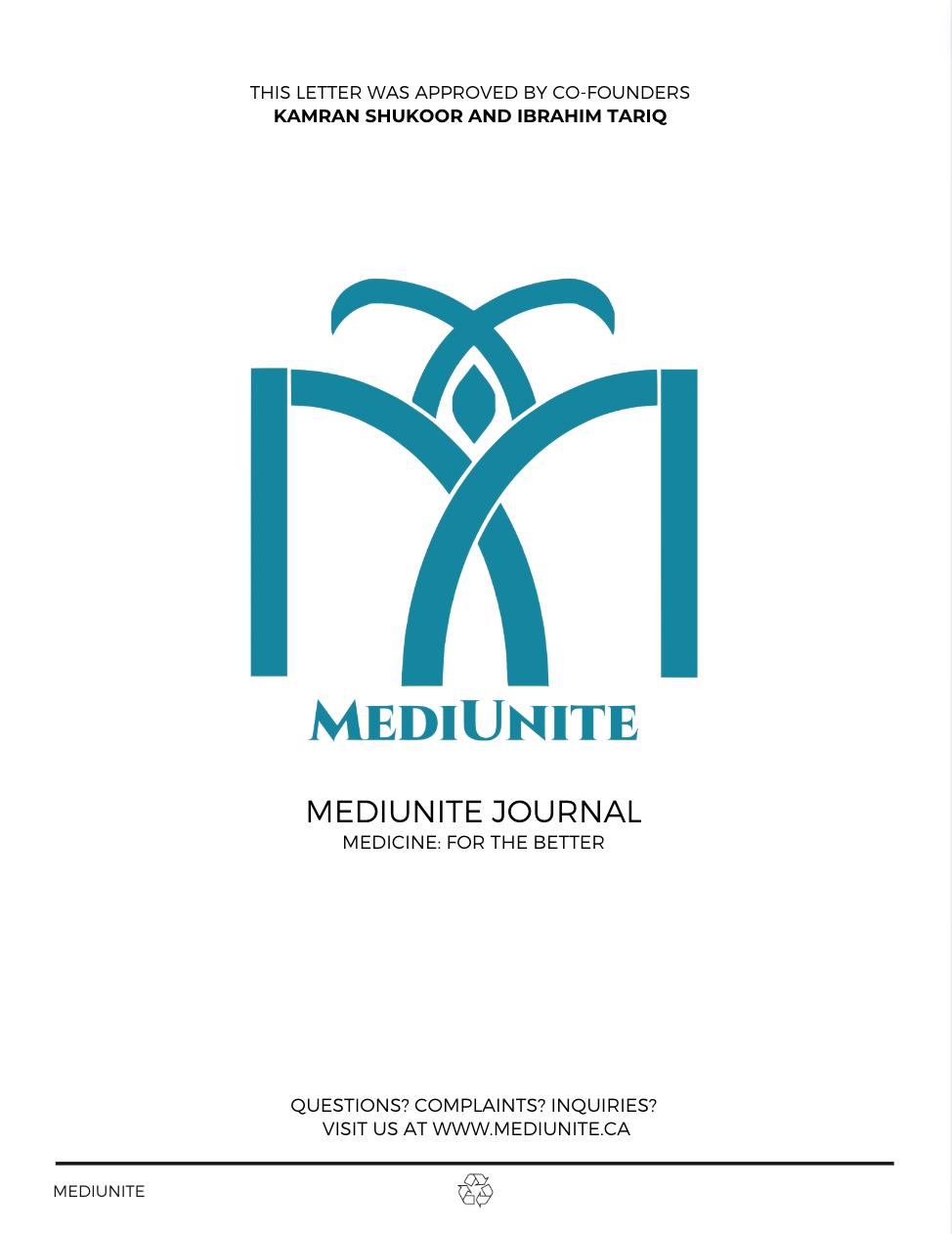
THIS LETTER WAS APPROVED BY CO-FOUNDERS
KAMRAN SHUKOOR AND IBRAHIM TARIQ
THIS ISSUE WAS EDITED BY EDITORS
ALICE-NAYEON KIM, LYNN NGUYEN, MON MYAT NOE ZAY, PARVEN AVCI, SIYA PATEL, KAREEM ELMASSRI, SRIJAN NATH, SAZARINA AZAMYAR, AND ANDREA RUSU
ISSUE N.7



















